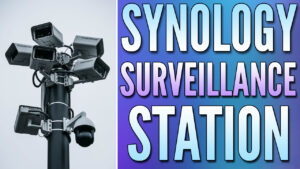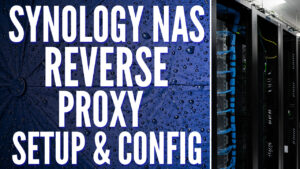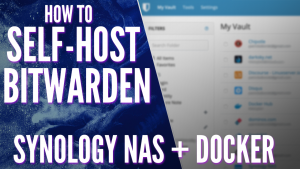In this article, we are going to take a look at what is Synology Hybrid RAID (SHR).
I’m going to do my best to explain what is Synology Hybrid RAID, but from a general, user-friendly perspective. The reason is that Synology has a great article that explains SHR in detail from a technical perspective.
What is Synology Hybrid RAID (SHR)?
Synology Hybrid Raid is an automated RAID management system, which is a fancy way of saying that you will have the flexibility to use different-sized hard drives in a RAID array, while actually utilizing some of the storage space. SHR is based on a Linux RAID system, and you can technically use SHR or SHR-2 when you configure your storage pool.
To demonstrate SHR using the example below (with Synology’s RAID calculator), you’ll see that two 12TB hard drives and two 4TB hard drives will give you 20TB of usable space with SHR but only 12TB of usable space with RAID 5. The reason is that RAID 5 can only utilize the smallest sized hard drive in the RAID array, so all other hard drives will be limited to the smallest sized drive. For that reason, in RAID 5, it’s in your best interest to use same-sized hard drives.
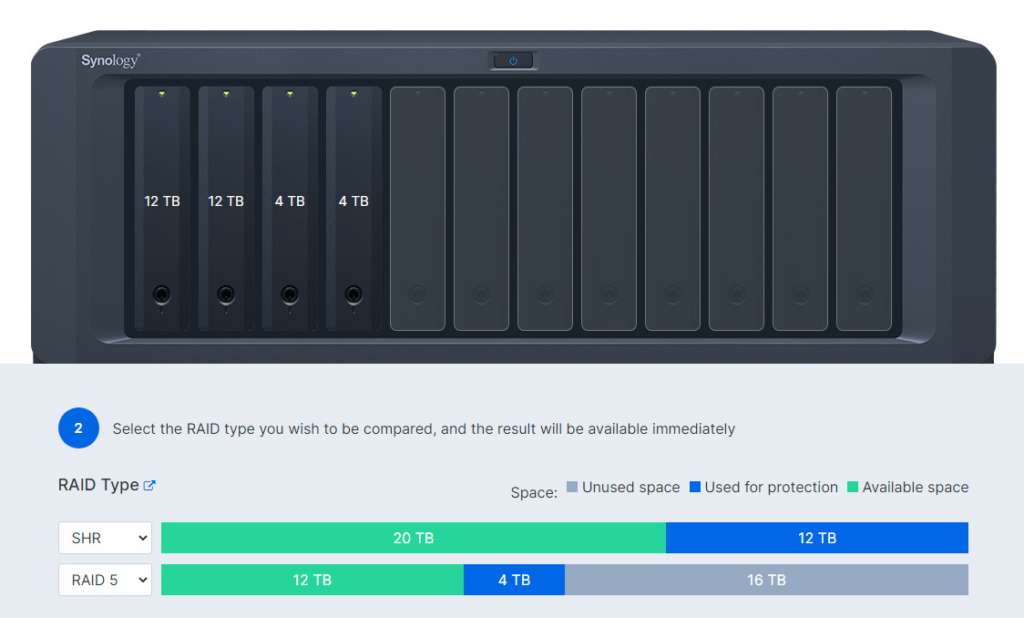
SHR is a tremendous benefit as mixing hard drive sizes gives you the flexibility to utilize smaller-sized hard drives initially, and eventually upgrade to larger-sized hard drives if desired. To highlight that point, if you were to remove one of the 4TB hard drives and upgrade it to a 12TB hard drive, after the RAID array rebuilds, your usable storage space will jump up to 28TB. Once again, using RAID 5, you would still only have 12TB of usable space.
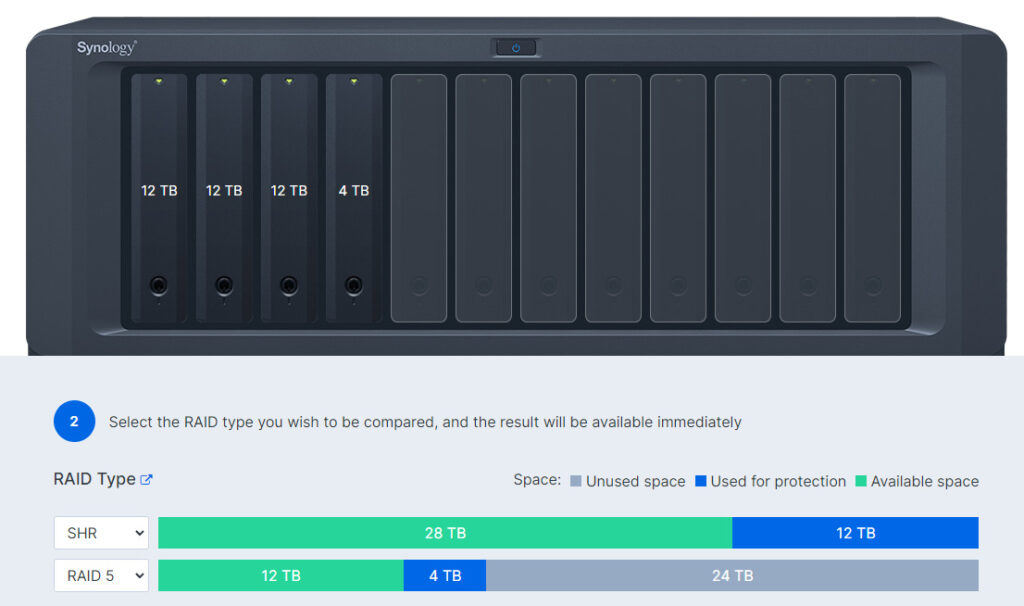
To summarize everything we just went over, the main benefit of SHR from a user’s perspective is flexibility. If you intend on using the same-sized hard drives and absolutely never mixing drives, you can use RAID 5 and from a usable space perspective, it will match SHR.
It’s also extremely important to highlight that SHR is fault-tolerant. This means that if you were to lose any of the hard drives due to a mechanical failure, you will be able to rebuild your RAID array entirely. This is an important point to understand, as it might appear that losing a 12TB hard drive in our example above will cause data loss when it will not. After you add the new hard drive, the RAID array will rebuild properly.
Finally, an SHR array can be created with a minimum of two hard drives with full drive-failure protection. On the other hand, RAID 5 must have at least three hard drives installed. This is a big difference, as many people won’t fill their NAS with hard drives immediately.
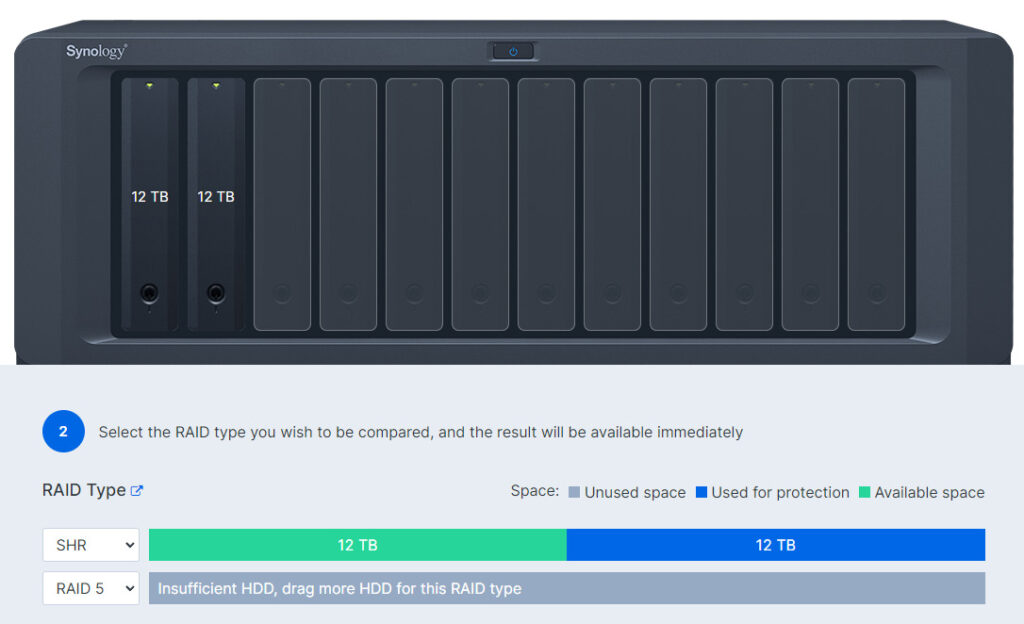
How does Synology Hybrid RAID (SHR) Work?
A traditional RAID array will utilize the smallest drive in a storage pool only, meaning that larger drives will still default to the smaller-sized hard drive’s storage space when creating the RAID array. The only way to increase the size of the storage pool would be to match all drives to be the same size.
SHR is different in the sense that it divides the drive’s storage space into small chunks which allow additional storage space to be used. SHR is not proprietary, meaning that you can technically mount an SHR RAID array in Linux if necessary. It’s not out-of-the-box functionality, but it can be done if desired.
Conclusion – What is Synology Hybrid RAID (SHR)?
As mentioned in the introduction, this is an extremely simplified way of looking at what Synology Hybrid RAID is. There’s an extremely technical explanation with screenshots of how SHR works on Synology’s website, but for the regular user looking to set up their first RAID array, the important thing to understand is the outcome of your selection in terms of usable storage space.
SHR provides flexibility. If flexibility isn’t important to you or you never intend on using mixed-sized hard drives, there’s no real reason to pick SHR as RAID 5 will provide slightly (and I mean slightly) increased transfer speeds.
Thanks for checking out the tutorial on what is Synology Hybrid RAID. If you have any questions on what is Synology Hybrid RAID, feel free to leave them in the comments!

